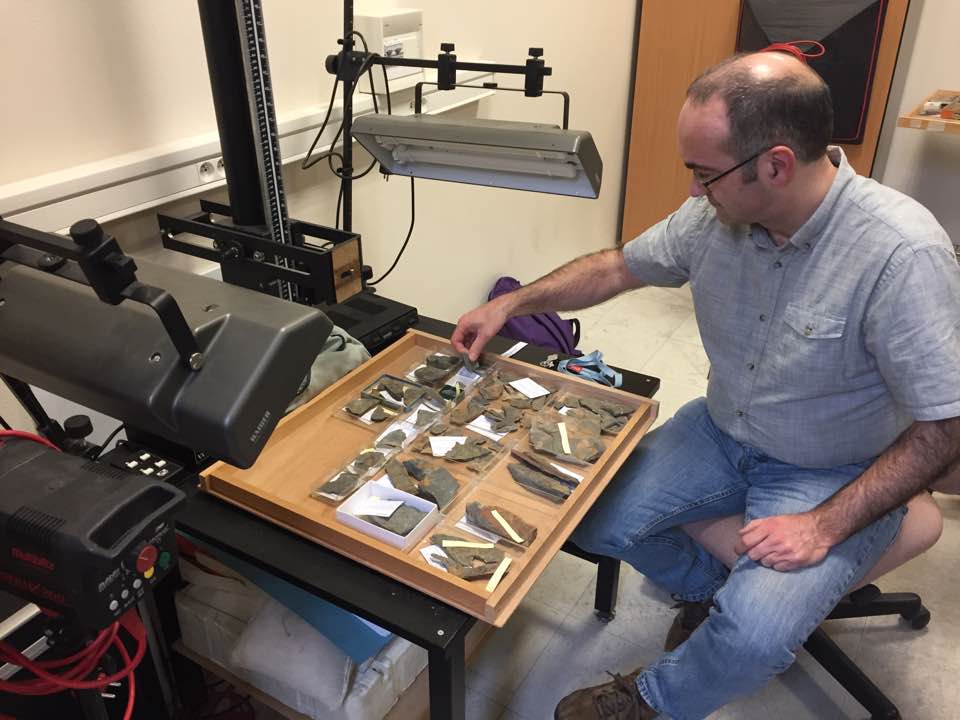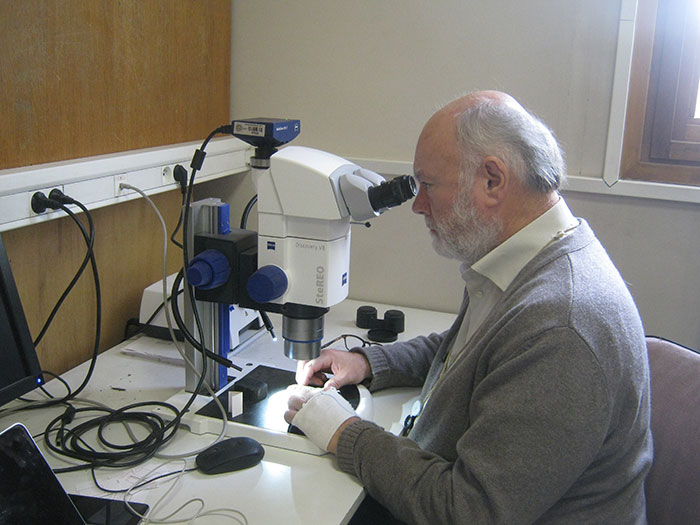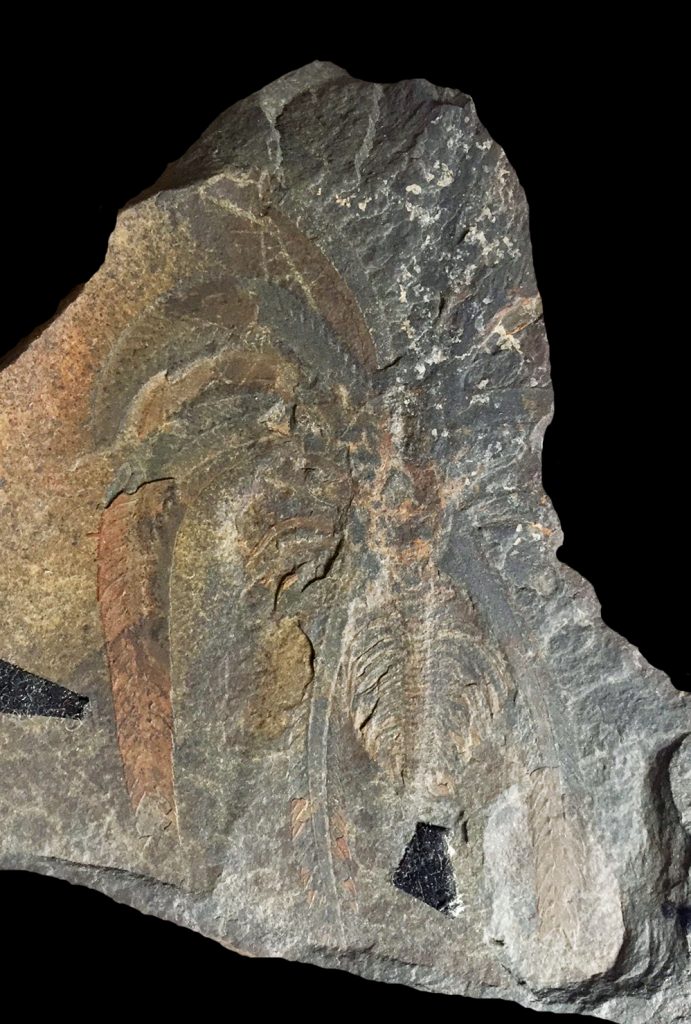This autumn I made my third research visit to the Université Claude Bernard 1 in Lyon.
On arrival at Lyon airport, I was welcomed by a nice 25°C; a tad warmer than I had expected. The following day I was welcomed by my colleagues Dr Emmanuel Robert (Curator of the palaeontological collections) and Dr Bertrand Lefèbvre (Researcher at the CNRS – the French National Centre for Scientific Research). After a few formalities, I started to go through the new material collected earlier this year. These fossils were collected from the region around Zagora, in the Moroccan Anti-Atlas range. There were about three large wardrobe-sized cabinets, each holding about 50 trays variably filled with specimens.

My colleague, Professor David Harper (Principal of Van Mildert College, University of Durham), who is working with me on this project, joined me the following day, Saturday, and my colleagues in Lyon had made the necessary arrangements to allow us access to the collections throughout the weekend. Just before lunchtime on Saturday, as a welcome, we were treated to an apéritif consisting of a gastronomic fusion of Scottish salmon complemented by a glass of Bourgogne Aligoté. This was an opportunity to discuss the project and future collaboration, in particular with my colleague Bertrand and one of his recent PhD students, Farid Saleh, who has already visited the collection at National Museums Collection Centre for his Masters thesis. We are preparing a publication that should be submitted in the next few months, but for the time being we are presenting a poster at the next Palaeontological Association Meeting in London this December.

The material was only recently sorted by my French colleagues by fossil localities, but all the fossil groups were still mixed within these trays. This meant we had to inspect each tray to find the brachiopods that were of interest. Nevertheless, this enabled us to come across some fine specimens, such as a marellomorph arthropod with its extravagant appendages. Such groups of animals were also found in rocks about 20 million years younger (for example in the Cambrian Burgess Shales, excavated in Canada), but there is a gap in the fossil record where these animals are not preserved (or haven’t been found yet). As for the brachiopods, this visit highlighted the diversity, richness and uniqueness of many of the species and a selected part of the collection we looked at will soon be sent to the Collections Centre for further investigation. With this additional collection, I will be able to start the taxonomic descriptions of the fauna that will be the core of our study.

Of course I must not forget the gastronomy and bouchons! Bouchons are restaurants typical of Lyon that serve traditional, hearty food, using local produce. No fuss. Selected typical dishes (and all my favourite) include quenelle de brochet, andouillette, soupe à l’oignon lyonnaise and cheese such as Saint-Marcellin, and of course wine from nearby producing regions, either from the Côtes-du-Rhône area (slightly south of Lyon, along the Rhône Valley) or from the Bourgogne region (north of Lyon). A typical apéritif is called a Communard (possibly because its colour is reminiscent of the dark red colour of the flag used by the Commune de Paris rebellion in the 1870’s). It is similar to a kir, but made with Beaujolais wine and crème de cassis, in place of a Bourgogne Aligoté (white wine) as is traditional for a kir.
A visit to the collections of the Yale Peabody Museum of Natural History in New Haven, Connecticut, is still planned in order to complete our survey of the brachiopod fauna from the Fezouata Shale, but this will not happen before next year. However, before this I have been invited by my colleague Bertrand Lefebvre to join the fieldwork he is organising (with colleagues from the Université de Bretagne Occidentale, my alma mater) in February 2018. We will be collecting more fossils and collect rock core samples from the area around Zagora, and I will tell you all about it when I get back.
